
NONLINEAR DYNAMICS
Scope & Guideline
Pioneering Research in Diverse Engineering Fields
Introduction
Aims and Scopes
- Nonlinear Dynamics Theory:
Research encompassing the mathematical foundations of nonlinear dynamics, including stability analysis, bifurcation theory, and chaos theory. - Control Systems:
Studies related to the design and analysis of control systems for nonlinear dynamic systems, including adaptive control, robust control, and event-triggered control strategies. - Applications in Engineering:
Application of nonlinear dynamics principles to various engineering fields, such as mechanical, civil, aerospace, and electrical engineering, focusing on real-world challenges and solutions. - Modeling and Simulation:
Development of models for complex systems, including fluid dynamics, structural dynamics, and biological systems, often utilizing advanced computational techniques and algorithms. - Experimental Validation:
Research that includes experimental studies to validate theoretical models and simulations, bridging the gap between theory and practical applications. - Image Processing and Encryption:
Innovative approaches for image processing and encryption utilizing principles of nonlinear dynamics, chaos theory, and machine learning.
Trending and Emerging
- Data-Driven Approaches:
There is a growing trend towards utilizing data-driven techniques, including machine learning and artificial intelligence, to analyze nonlinear dynamics, leading to innovative modeling and control solutions. - Nonlinear Control Strategies:
Research on advanced control strategies, including adaptive, robust, and event-triggered controls for nonlinear systems, is increasingly prominent, reflecting the demand for effective management of complex dynamic systems. - Multiscale Dynamics:
An emerging focus on multiscale dynamics, where researchers study interactions across different scales in time and space, is gaining traction, particularly in fields like materials science and ecology. - Nonlinear Energy Harvesting:
The development of nonlinear energy harvesting systems is trending, highlighting the application of nonlinear dynamics in sustainable energy solutions and the design of efficient energy absorption systems. - Complex Adaptive Systems:
Research into complex adaptive systems, including ecological and socio-economic models, is on the rise, underscoring the interdisciplinary nature of current nonlinear dynamics research.
Declining or Waning
- Traditional Linear Dynamics:
Research focused on linear systems has become less prevalent as the field shifts towards more complex nonlinear models, reflecting the need for more sophisticated analytical and computational approaches. - Static Analysis Approaches:
The emphasis on static analysis methods has waned in favor of dynamic analysis techniques that account for time-dependent behaviors and interactions in systems. - Simple Nonlinear Models:
There is a noticeable decline in studies that utilize overly simplified nonlinear models, with a growing preference for more complex, realistic models that capture essential dynamics. - Basic Chaos Theory:
While chaos theory remains important, the focus has shifted towards more applied chaos research that examines its implications in real-world systems rather than purely theoretical explorations. - Local Stability Analysis:
The focus on local stability analysis is declining as researchers increasingly explore global stability and bifurcation phenomena in complex systems.
Similar Journals

KYBERNETIKA
Innovating Tomorrow’s Technologies Today.KYBERNETIKA is a distinguished journal published by KYBERNETIKA in the Czech Republic, dedicated to advancing the fields of Artificial Intelligence, Control and Systems Engineering, Electrical and Electronic Engineering, Information Systems, Software, and Theoretical Computer Science. Since its inception in 1972, it has played a pivotal role in disseminating research findings and innovative theories, providing a platform for academic discourse and groundbreaking studies. The journal has evolved through various periods, including converged years from 1972 to 1989 and 1996 to 2024, showcasing a commitment to ongoing scholarship within the vibrant academic community. Its current standing in multiple categories reflects its importance, being ranked in the third and fourth quartiles in various disciplines, thus appealing to diverse researchers and professionals. While KYBERNETIKA does not offer Open Access, it remains a valuable resource for those interested in the latest developments in its respective fields. The address for submissions and inquiries is POD VODARENSKOU VEZI 4, PRAGUE 8 182 08, CZECH REPUBLIC. Engage with this invaluable repository of knowledge to stay at the forefront of research and innovation.

JOURNAL OF DYNAMICAL AND CONTROL SYSTEMS
Pioneering Research in Control Systems and Numerical AnalysisJOURNAL OF DYNAMICAL AND CONTROL SYSTEMS is a premier interdisciplinary journal published by Springer/Plenum Publishers, recognized for its significant contributions to the fields of dynamical systems, control theory, and numerical analysis. With an ISSN of 1079-2724 and an E-ISSN of 1573-8698, the journal serves as an important platform for researchers and professionals to share their findings and innovative methodologies. Covering topics from algebra and number theory to control and optimization, it holds a respectable position in the 2023 Q2 quartile rankings across various categories, reflecting its impact and quality within the academic community. The journal’s scope is expansive, aiming to foster advancements and insights that are instrumental for academics and industry experts alike. With a convergence period from 1995 to 2024, the journal continues to be a vital resource for students, researchers, and professionals seeking to navigate the complexities of control systems and their dynamic interactions. For those looking to contribute to the ongoing discourse in these critical areas of study, the JOURNAL OF DYNAMICAL AND CONTROL SYSTEMS remains a highly recommended choice.

Moscow University Mechanics Bulletin
Championing Knowledge in Mechanical SciencesMoscow University Mechanics Bulletin, published by PLEIADES PUBLISHING INC, is a dedicated journal that has been influencing the fields of mechanical engineering and mechanics since its inception. With an ISSN of 0027-1330 and E-ISSN of 1934-8452, this journal serves as a crucial platform for advancing knowledge in mathematics, mechanical engineering, and mechanics of materials. Though currently indexed in the Q4 category across these disciplines, it offers a unique space for researchers and professionals to engage with emerging theories, experimental results, and practical applications. With a converged publication history spanning from 1973 to 1987, and continuing from 2007 to 2024, the journal remains relevant in today’s academic landscape. Though it operates under traditional access models, the journal's global reach aims to connect diverse voices in engineering research. Aspiring researchers and seasoned professionals alike will find valuable insights and a robust discourse that contribute to their respective fields.

AUTOMATION AND REMOTE CONTROL
Pioneering Research in Control and Systems EngineeringAUTOMATION AND REMOTE CONTROL, published by MAIK Nauka/Interperiodica/Springer, is a distinguished international journal renowned for its contribution to the fields of Control and Systems Engineering and Electrical and Electronic Engineering. With an ISSN of 0005-1179 and an E-ISSN of 1608-3032, this journal has been pivotal since its inception in 1973, offering valuable insights and innovative research findings that span the spectrum of automation technologies and control systems. While categorized in the Q3 quartile in both relevant engineering categories as of 2023, it holds a significant position for researchers aiming to disseminate and access quality research in these areas. The journal emphasizes the importance of integrating advanced automation methods and control strategies, fostering the exchange of knowledge among academics, industry professionals, and students alike. Although it does not provide open access options, the compelling research presented within its pages continues to influence the ongoing development of automation systems worldwide.
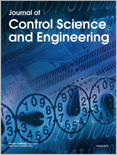
Journal of Control Science and Engineering
Advancing the Frontiers of Control Science and EngineeringThe Journal of Control Science and Engineering, published by HINDAWI LTD, is a prominent open-access journal that has been disseminating pioneering research since 2007. With its ISSN 1687-5249 and E-ISSN 1687-5257, the journal serves as a crucial platform for researchers, professionals, and students engaged in the fields of Computer Science Applications, Electrical and Electronic Engineering, and Modeling and Simulation. Holding a Q3 quartile ranking in 2023 across these categories, the journal maintains rigorous academic standards and is recognized for its contributions to advancing knowledge and technology in control science. The journal's current Scopus rankings highlight its significance, with impressive percentiles placing it within the top tier of its fields. Readers can access a wide range of high-quality research articles through its open access model, further establishing the journal as an essential resource for anyone seeking to broaden their understanding and application of control principles.
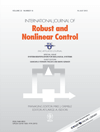
INTERNATIONAL JOURNAL OF ROBUST AND NONLINEAR CONTROL
Elevating Research in Robust and Nonlinear ControlINTERNATIONAL JOURNAL OF ROBUST AND NONLINEAR CONTROL, published by Wiley, is a leading journal in the fields of Aerospace Engineering, Biomedical Engineering, Chemical Engineering, Control and Systems Engineering, Electrical and Electronic Engineering, Industrial and Manufacturing Engineering, and Mechanical Engineering. With an impressive range of categories all ranked in the Q1 quartile as of 2023, this journal serves as a pivotal platform for disseminating high-quality research focused on robust and nonlinear control methodologies. Researchers and practitioners benefit from its comprehensive scope, which includes theoretical advances, algorithm development, and practical applications. The journal's commitment to fostering innovation in control systems is reflected in its notable Scopus rankings across various engineering disciplines, ensuring your work reaches a wide audience. Emphasizing the importance of collaboration in interdisciplinary contexts, the INTERNATIONAL JOURNAL OF ROBUST AND NONLINEAR CONTROL is essential for both seasoned researchers and newcomers in the engineering community, providing a vital resource for advancing the frontiers of knowledge in control systems.
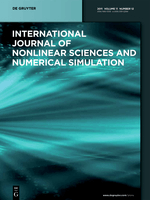
INTERNATIONAL JOURNAL OF NONLINEAR SCIENCES AND NUMERICAL SIMULATION
Exploring the Dynamics of Complexity and ComputationINTERNATIONAL JOURNAL OF NONLINEAR SCIENCES AND NUMERICAL SIMULATION, published by WALTER DE GRUYTER GMBH, serves as a premier platform for advancing knowledge in the vibrant domains of applied mathematics, computational mechanics, and various fields of engineering and physics. With an ISSN of 1565-1339, this journal has been at the forefront of disseminating significant research findings since its inception in 2000. Its commitment to quality is reflected in its category quartiles for 2023, ranked Q2 in Computational Mechanics and Engineering (miscellaneous), and Q3 in multiple engineering disciplines. Although it currently operates under a subscription model, the journal remains dedicated to presenting groundbreaking studies that explore complex nonlinear phenomena and numerical methodologies. As an invaluable resource for researchers, professionals, and students alike, the journal aims to foster innovation and collaboration across related fields, enhancing both theory and application through its peer-reviewed articles.
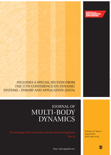
PROCEEDINGS OF THE INSTITUTION OF MECHANICAL ENGINEERS PART K-JOURNAL OF MULTI-BODY DYNAMICS
Driving Progress in Multi-Body Dynamics ScholarshipPROCEEDINGS OF THE INSTITUTION OF MECHANICAL ENGINEERS PART K-JOURNAL OF MULTI-BODY DYNAMICS, published by SAGE PUBLICATIONS LTD, stands as a pivotal platform for research dissemination in the fields of Mechanical Engineering and Condensed Matter Physics. With an ISSN of 1464-4193 and an E-ISSN of 2041-3068, this journal covers a broad spectrum of topics related to multi-body dynamics, aiming to facilitate the exchange of knowledge among researchers, professionals, and students alike. With its impressive ranking in the Q2 category for both Mechanical Engineering and Condensed Matter Physics, the journal is recognized for its quality and relevance, placing it within the top 64th and 58th percentiles of its respective fields according to Scopus rankings. Housed in the United Kingdom and accessible via various academic platforms, this journal operates without an open access policy, ensuring rigor in the peer-review process. By bridging theoretical understanding and practical applications, the journal continues to contribute significantly to advancements in multi-body dynamics, making it an essential resource for those engaged in cutting-edge engineering research.
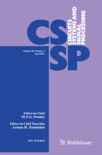
CIRCUITS SYSTEMS AND SIGNAL PROCESSING
Pioneering Research in Applied Mathematics and Signal TechnologiesCIRCUITS, SYSTEMS AND SIGNAL PROCESSING, published by Springer Birkhauser, is a highly regarded journal in the fields of applied mathematics and signal processing, boasting an impact factor that reflects its robust academic contributions. Established in 1982, this journal aims to disseminate cutting-edge research that bridges the gap between theoretical advancements and practical applications in circuit design, systems theory, and signal processing. With a Thomason Scopus ranking of Q2 in Applied Mathematics and Q3 in Signal Processing, it stands out as a leading resource for researchers, professionals, and students seeking to enhance their knowledge and innovate within these disciplines. The journal provides insight into the latest trends and technologies, making it an essential reading for those engaged in the development of signal processing methodologies. Although it does not offer Open Access options, it remains a critical repository of knowledge with deep relevance in today's tech-driven landscape.
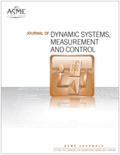
JOURNAL OF DYNAMIC SYSTEMS MEASUREMENT AND CONTROL-TRANSACTIONS OF THE ASME
Transforming research into practical solutions for dynamic challenges.JOURNAL OF DYNAMIC SYSTEMS MEASUREMENT AND CONTROL - TRANSACTIONS OF THE ASME is a renowned periodical published by the American Society of Mechanical Engineers (ASME), focused on advancing the field of dynamic systems, measurement, and control. With a rich publication history spanning from 1971 to 2025, this journal serves as a pivotal platform for disseminating high-quality research aimed at enhancing understanding and innovation in various sectors, including mechanical engineering, control and systems engineering, and information systems. The journal currently holds a respectable Q2 category ranking in multiple fields, reflecting its commitment to excellence and rigorous peer-review standards. Although it does not offer open access, its extensive reach within the academic community exemplifies its significance, making it an indispensable resource for researchers, professionals, and students eager to engage with cutting-edge advancements. For those seeking to expand their knowledge and contribute to the dialogue surrounding dynamic systems and control mechanisms, JOURNAL OF DYNAMIC SYSTEMS MEASUREMENT AND CONTROL stands out as a critical reference.